Maraming klase at luto ang mga Hapon, na nagkakaiba depende sa region sa Japan (regional specialties, tulad sa pinas na may pagkaing Kapampangan, Bicol, Ilonngo, atbp). Iilan sa mga pinaka masarap at pinaka-kilalang pagkaing hapon ay ililista dito para sa kaalaman ng mga pinoy na papunta o titira sa Japan. Mayroong mga rice dishes, seafood dishes, noodle dishes, meat dishes, soya bean dishes, at iba pa.
Kaugnay: Paano magtanong ng presyo sa Hapon?
1. Sushi 寿司- Ang Sushi ay isang uri ng pagkain na mayroong sushi rice (cooked white rice flavored with seasoned rice vinegar). May iba’t ibang uri ng sushi dishes, katulad ng nigirizushi (hand formed sushi), makizushi (rolled sushi), at chirashi (sushi rice topped with raw fish). Ang Sushi ay masasabing pinaka-sikat na Japanese dish sa labas ng Japan, at ganun din sa mga Hapon.

2. Donburi 丼 – Ang Donburi ay isang bowl ng plain cooked rice na nilalagyan ng ulam sa ibabaw. Sini-serve ang Donburi sa mga specialty restaurants, at madalas din nakikita sila sa mga menu ng kahit anong ordinaryong Japanese restaurant. Ang mga madalas na ulam o topping na nilalagyan ay ang gyudon (stewed beef), katsudon (tonkatsu), tendon (tempura), oyakodon (chicken and egg), tekkadon (maguro), at kaisendon (raw seafood).

3. Noodle Dishes
Mabenta ang mga noodle dishes sa Japan, at kinakain ito ng hot o cold, depende sa panahon o season. Maraming noodle restaurants at food stands sa Japan, at madalas na makakakita ng mga noodle stands sa may train station.
a. Soba そば - ay native Japanese noodles na gawa sa buckwheat flour o isang mixture ng buckwheat at wheat flour. Ang Soba noodles ay kasing taba (thick) ng spaghetti, at maaaring kainin ng hot or cold na may iba’t ibang toppings. Makikita sa picture sa ibaba ang itsura ng soba noodles.

b. Udon うどん - ay Japanese noodles na gawa sa wheat flour. Ang Udon ay mas makapal (thicker) kaysa sa soba at kinakain ito ng mainit o malamig kasama ng ibang toppings tulad ng fried tofu (kitsune udon), tempura (tempura udon), and mountain vegetables (sansai udon). Sa picture sa ibaba, makikita na malapad ang noodles nito.
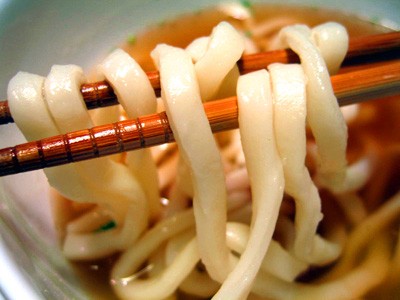
c. Ramen ラーメン - ay Chinese style noodles na mayroong sabaw (soup) at iba’t ibang toppings (sliced chicken, pork, beef or vegetables), na makikita sa picture sa ibaba. Ang Ramen ay isa sa pinak-popular dish na orihinal na galing China, ngunit naging Japanized na sa katagalan.
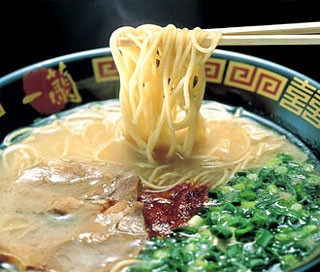
d. Somen そうめん – Katulad ng Udon noodles, ang Somen ay Japanese noodles na
gawa sa wheat flour, pero mas manipis (thinner) kaysa sa Udon and Soba. Ang Somen
ay kadalasan kinakain ng malamig at specialty ito sa summer.
e. Yakisoba 焼きそば – ay fried Chinese style noodles
mixed with pieces of meat, cabbage, carrots, or other vegetables, and garnished with red ginger. Sikat na pagkain ito sa mga festival sa Japan. Kung sa atin sa pinas, ang tawag ay Pansit Canton.
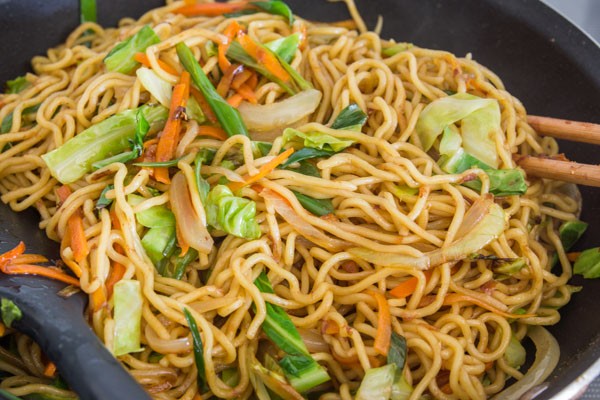
4. Sashimi 刺身 – ay hilaw na seafood (raw seafood). Madaming klaseng isda ang pwedeng kainin ng hilaw kung fresh at tama ang preparation sa kanila. Kadalasan sinasawsaw ang sashimi sa soy sauce at wasabi.
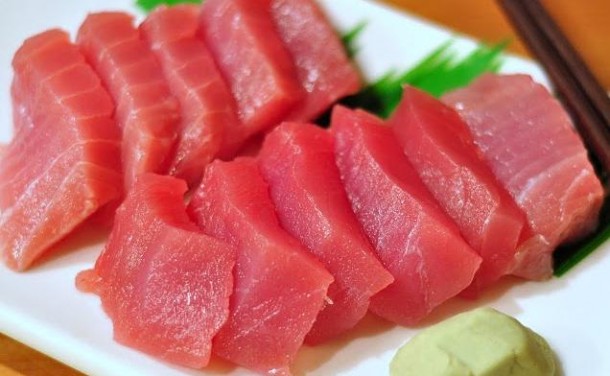
5. Grilled food/dishes (Yaki-) 焼き- Ang “Yaki” ay isang adjective na ibig sabihin ay “grilled” (inihaw) o “roasted”. Iba’t ibang tawag sa mga pagkain na inihaw.
a. Yakizakana 焼き魚 - ay inihaw na isda (grilled fish). Madaming klase ng isda (fish) ang maaaring iihaw, katulad ng: mackerel (saba), salmon (sakeサケ), mackerel pike (sanma), horse mackerel (aji), Okhotsk atka mackerel (hokke), sea bream (tai) at sweetfish (ayu).
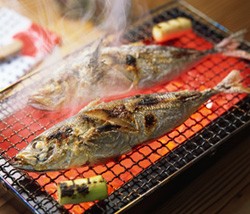
b. Yakiniku 焼肉 – Ang Yakiniku naman ay "grilled meat" at linuluto ito sa pamamagitan ng pagihaw ng mga maliliit na piraso ng karne (kadalasan beef and pork) sa isang grill sa lamesa. Sa ating mga pinoy, ang tawag dito ay “barbeque”. Mraming specialized yakiniku restaurants sa Japan at kadalasan nag-serve sila ng iba’t ibang klase at parte ng karne.
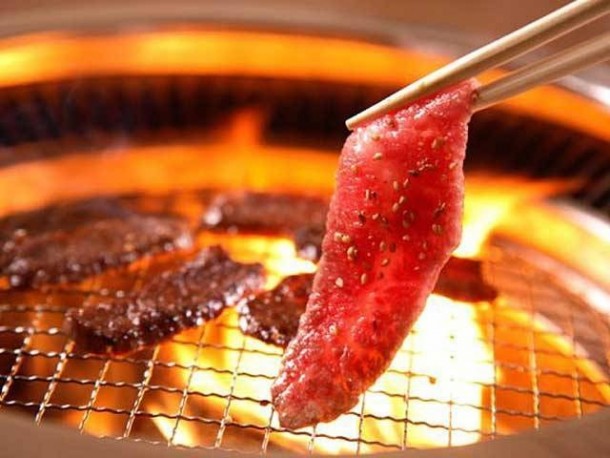
c. Yakitori 焼き魚 - ay tinuhog (skewered) at inihaw na chicken pieces seasoned with salt or sauce. Halos lahat ng every parte ng chicken ay maaring gawing yakitori, pati na ang gizzards (balunbalunan), skin, and other organs (Katulad ng isaw sa Pinas).
6. Tempura 天ぷら or 天麩羅 – ay ang paghalo ng seafood, vegetables, mushrooms, o meat (karne) sa batter at dini-deep fry. Pagkatapos lutuin, mayroon itong yellow, crispy texture, na pwedeng haluan ng salt o isawsaw sa isang light sauce bago kainin. Ang Tempura ay orihinal na tinuro ng mga Portuguese noong 16th century sa mga Hapon, ngunit ngayon ay naging isa sa pinakakilalang pagkain ng Japan sa buong mundo.
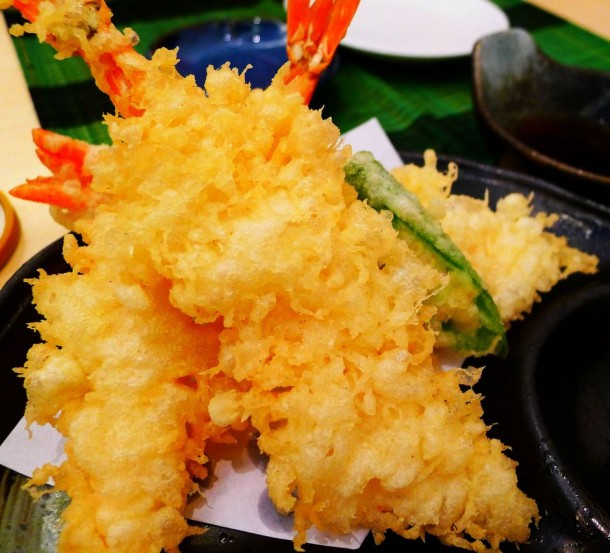
7. Nikujaga 肉じゃが – ay isang sikat na pagkaing Hapon na kadalasang linuluto sa bahay. Ito ay gawa sa sweet stewed meat (niku) at patatas/potatoes (jagaimo).
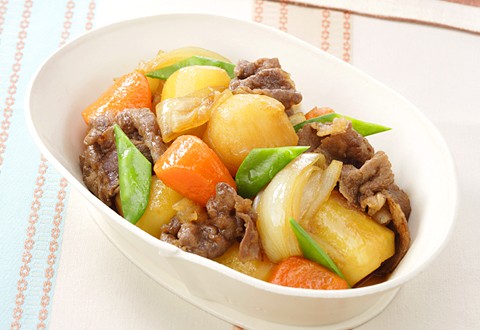
8. Teppanyaki 鉄板焼き – Ang Teppanyaki ay pagkain (tulad ng meat, seafood at vegetables) na niluluto sa isang malaking iron griddle (teppan), sa harapan ng customer na nakaupo at kumakain. (Ang iron griddle ay katulad ng flat stainless grill o lutuan ng hamburger na ginagamit ng mga fast food restaurants) Kadalasang mayroong chef na linuluto ang Teppanyaki sa harap ng customer na kumakain na makikita sa picture sa ibaba.
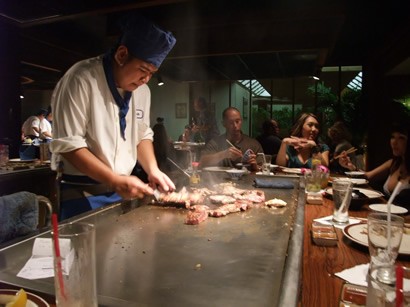
9. Soybean dishes – Maraming pagkaing Hapon ay hango sa soybeans, tulad ng Tofu, natto, miso at iba pang importanteng ingredients. Babanggitin dito ang 2 sa pinakakilalang soybean based Japanese food.
a. Hiyayakko 冷奴, cold tofu - ay fresh chilled tofu (kadalasan malambot na tofu) na nilalagyan sa ibabaw (garnished with) ng grated ginger (luya), katsuobushi (shaved bonito flakes), and green onions at seasoned with soy sauce. Kadalasan ay binubuhusan ng toyo (soy sauce) ito bago kainin.

b. Miso soup 味噌汁- ay ginagawa sa pag-dissolve ng miso paste sa dish stock (dashi). Kadalasan ay hinahaluan ito ng wakame seaweed, small pieces of tofu, at sliced aburaage, atbp.

Read more: Pinaka-importanteng salitang hapon na dapat matutunan
Paano magtanong ng presyo sa hapon?
Cultural differences mean different social behaviour and different ways of communicating, even if people speak the same language. This often leads to misunderstandings in communication that is caused not necessarily by language/translation problems but by different social acting, as this also depends from our cultural backgrounds.
Exploring new cultures widens horizons and gives personal experiences. A rewarding parts of learning foreign languages is that it helps us to make connections with people overseas. It is amazing how people’s perception of a foreigner abroad changes when they speak the language of the host foreign country. It can transform the way people perceives you from an outsider to a friend. It allows a foreigner to build trust more quickly and to establish a stronger relationship with people. Also, we are showing respect to the mother countries of these languages.
Being well-versed in a country's culture goes a long way in preventing expensive marketing errors. Consumption patterns and buyer behavior reflect cultural influences and attitudes that differ country by country. They must be considered when interpreting market research used to make decisions on design, color, packaging, distribution and promotion. The act of naming a product, service or company could, if language implications are ignored, derail a promising business venture.